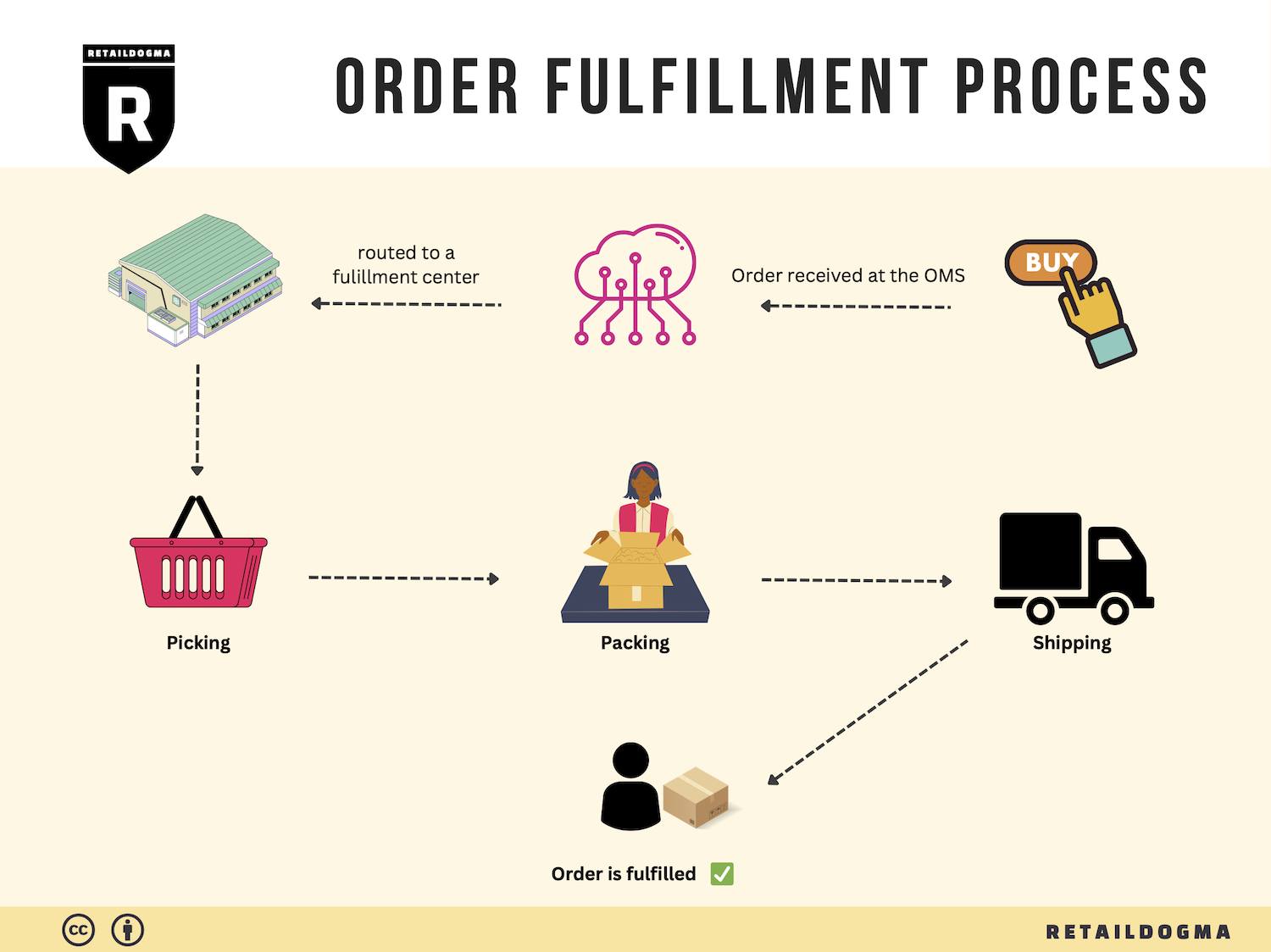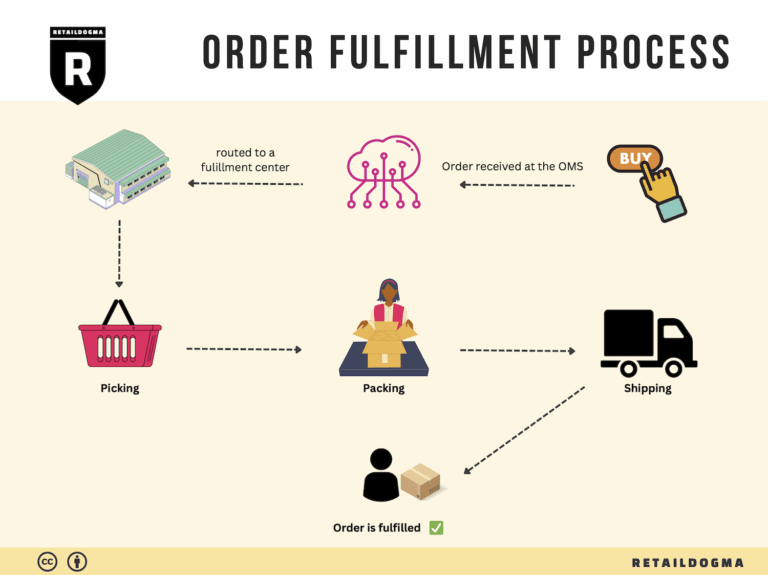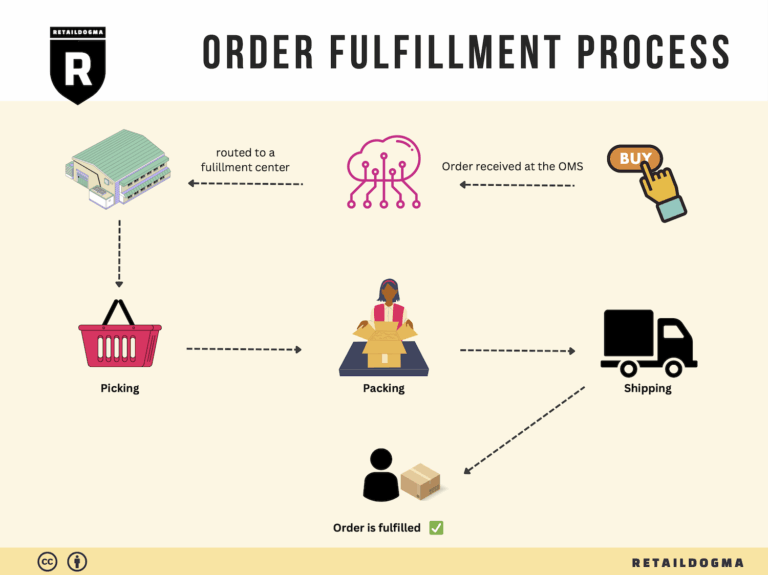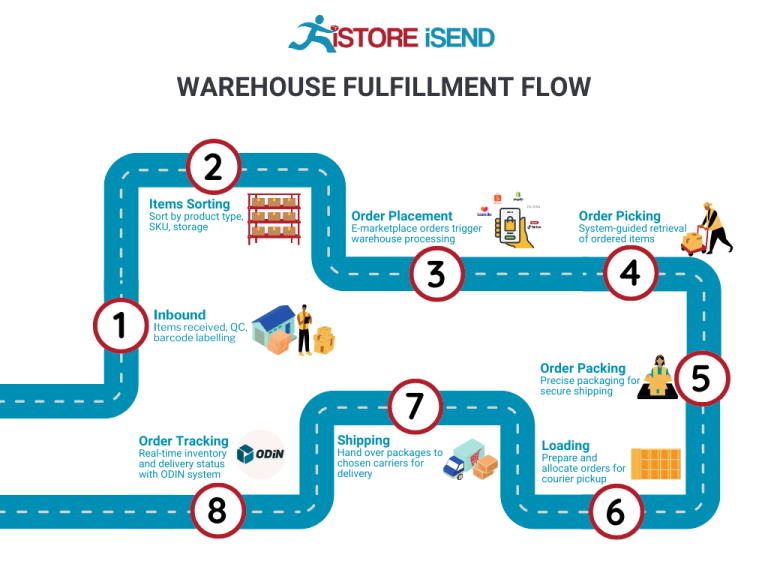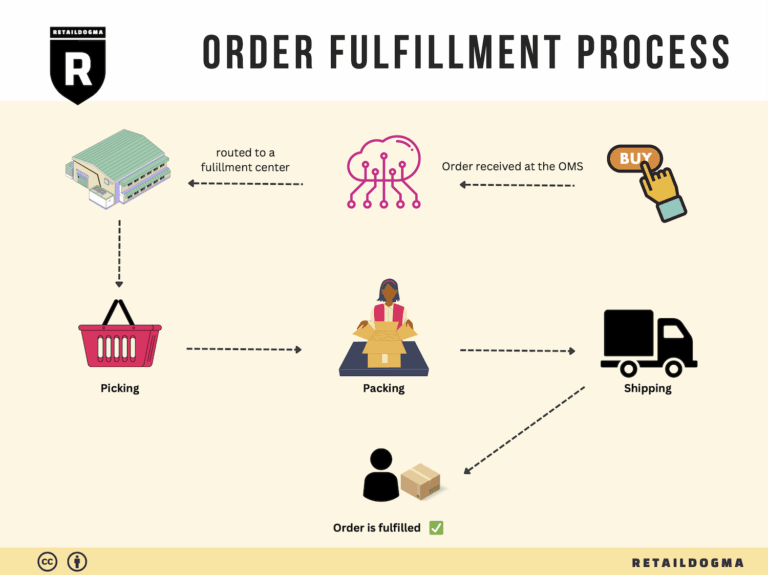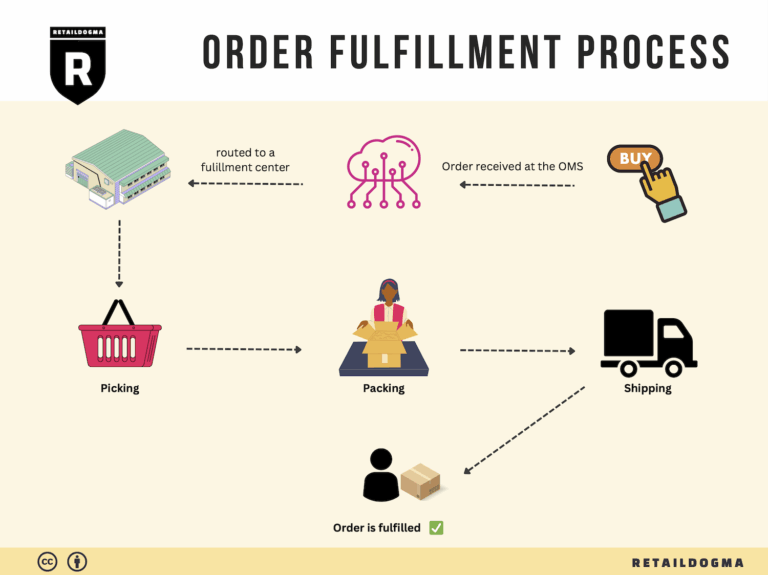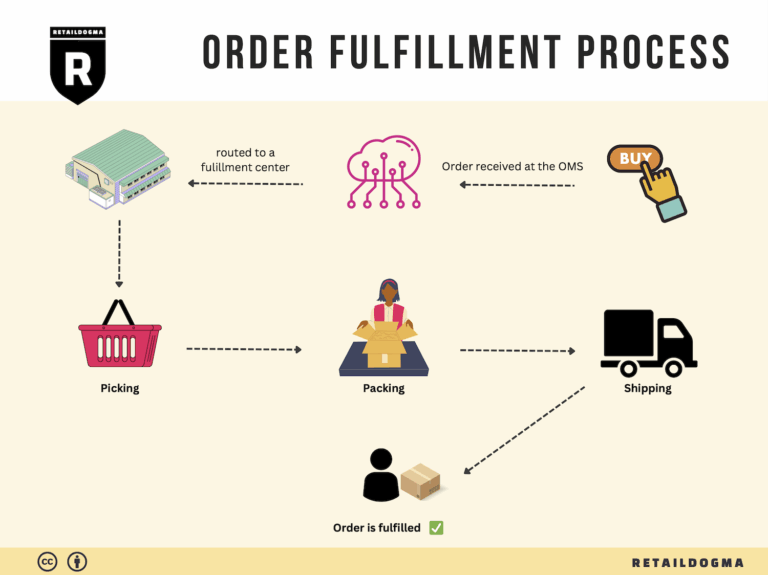How Order Fulfillment Works: A Step-by-Step Guide for Businesses
What is E-commerce Fulfillment? An Introduction for Growing Businesses
Understanding E-commerce Fulfillment: A Crucial Step for Growing Businesses
As your e-commerce business begins to thrive, the excitement of increased sales can quickly turn into the stress of managing logistics. Packing and shipping orders can become overwhelming, especially as order volumes rise. This is where e-commerce fulfillment comes into play—a vital process that involves getting your products into the hands of customers efficiently and accurately.
At its core, fulfillment is simply the process of receiving, processing, and delivering orders to customers. It encompasses everything from inventory management and order processing to shipping and handling returns. For growing businesses, mastering fulfillment is essential not only for maintaining customer satisfaction but also for scaling operations effectively.
In this guide, we will explore several key aspects of e-commerce fulfillment to help you navigate this complex landscape. We will start by discussing different fulfillment models, including Third-Party Logistics (3PL) providers and Fulfillment by Amazon (FBA), each of which has its unique advantages and considerations. Understanding these options will empower you to choose a model that aligns with your business goals and operational needs.
Next, we will outline the core services involved in the fulfillment process. These include inventory management, order picking and packing, shipping logistics, and returns management. Each component plays a critical role in ensuring that your customers receive their orders on time and in good condition.
Choosing the right fulfillment partner is another crucial decision for your business. We will provide practical guidance on what to look for in a fulfillment provider, including factors such as reliability, technology integration, customer service, and cost-effectiveness. Making an informed choice can significantly impact your ability to scale and enhance your brand reputation.
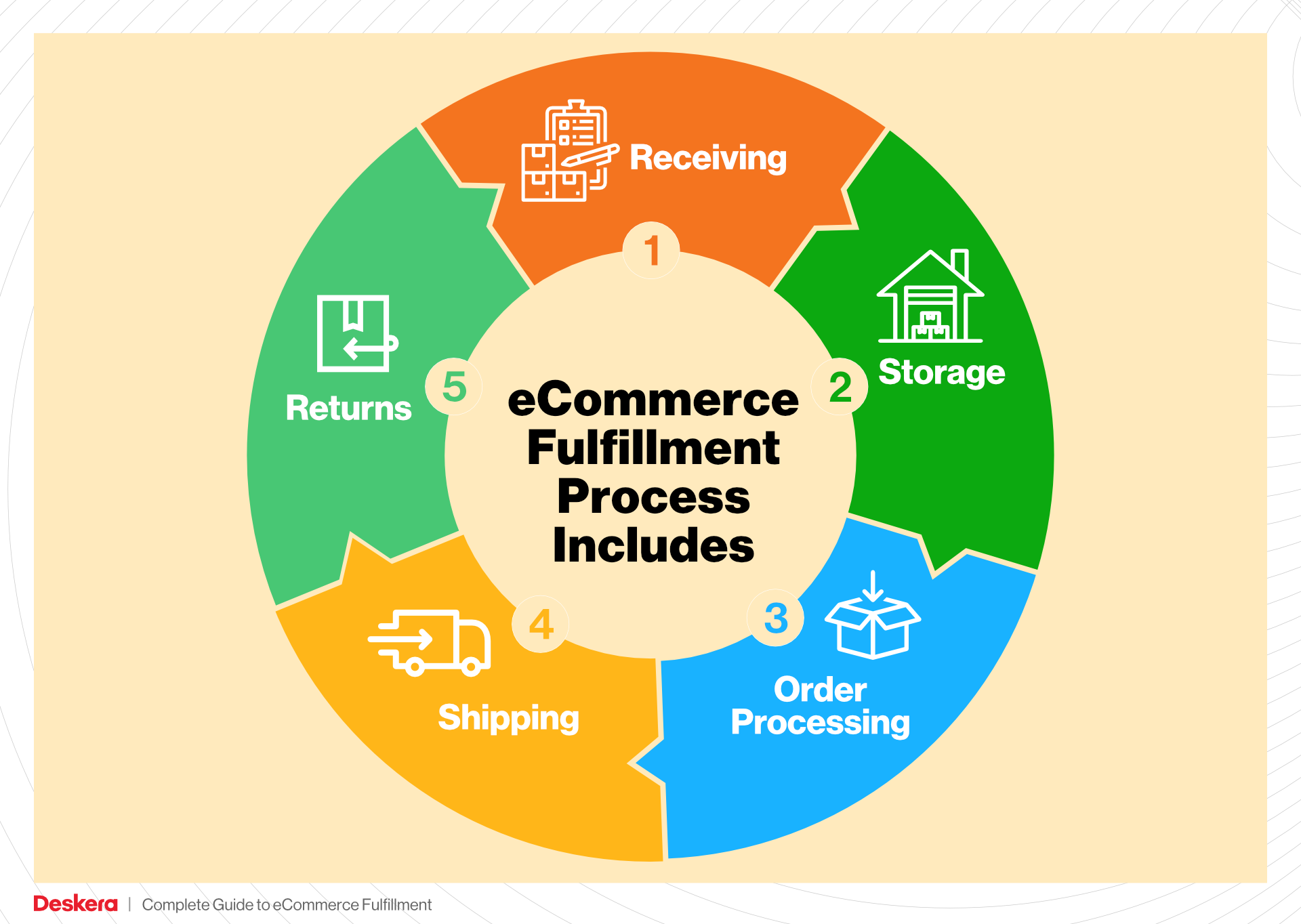
Lastly, we will delve into the pricing structures associated with fulfillment services. Understanding the costs involved will help you budget effectively and identify areas where you can save money as you grow.
The ultimate goal of this guide is to empower you, as a business owner or operations manager, to make informed decisions about your logistics strategy. By demystifying the fulfillment process and providing actionable insights, we aim to help you streamline your operations and focus on what you do best: growing your business.
What You’ll Learn In This Guide
- What is E-commerce Fulfillment? An Introduction for Growing Businesses
- The Order Fulfillment Process: From ‘Buy’ Button to Customer’s Door
- Comparing Fulfillment Models: In-House vs. 3PL vs. Dropshipping
- A Deep Dive into Amazon FBA: Pros, Cons, and Who It’s For
- Core Services Offered by Fulfillment Centers
- How to Choose a Fulfillment Partner: A 6-Point Checklist
- Understanding Fulfillment Pricing: A Breakdown of Common Fees
- Frequently Asked Questions (FAQs) about Fulfillment
- Conclusion: Is Outsourcing Fulfillment the Right Move for Your Business?
- Important Disclaimer
The Order Fulfillment Process: From ‘Buy’ Button to Customer’s Door
1. Receiving Inventory
The order fulfillment process begins with receiving inventory from suppliers or manufacturers. This step involves checking the incoming goods against purchase orders to ensure that the correct items and quantities have arrived. A key term associated with this step is SKU (Stock Keeping Unit), which is a unique identifier for each product variant.
Accurate receiving is crucial as it sets the foundation for inventory accuracy. Discrepancies at this stage can lead to stockouts, overstock, or delays in fulfilling customer orders, all of which can negatively impact customer satisfaction and the bottom line. After verification, inventory is logged into the warehouse management system (WMS), allowing for real-time tracking and management.
2. Warehouse Storage
Once inventory is received and verified, the next step is warehouse storage. This involves organizing products in the warehouse efficiently to maximize space and facilitate easy access. Key considerations include the use of bin locations or designated areas for different product categories.
Effective storage is important because it influences the speed and accuracy of subsequent steps in the fulfillment process. A well-organized warehouse can significantly reduce the time spent locating items, which in turn enhances overall operational efficiency. Implementing strategies such as FIFO (First In, First Out) helps in managing perishable goods and ensures that older stock is sold first, minimizing waste.
3. Order Picking
The order picking stage involves retrieving items from their storage locations based on customer orders. This process is often guided by pick lists, which detail the items and quantities required for each order. Various picking methods can be employed, such as single order picking, batch picking, or zone picking, depending on the size and complexity of the operation.
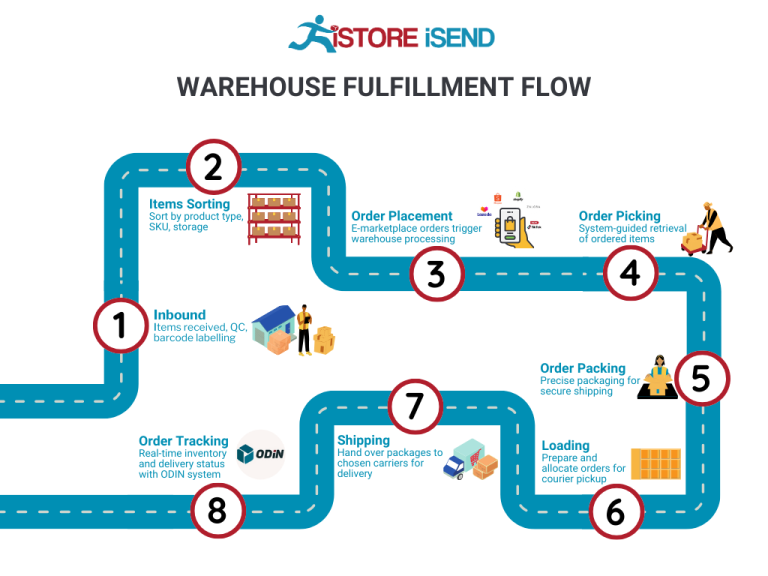
This step is vital as it directly impacts order accuracy and fulfillment speed. Errors in picking can lead to incorrect shipments, resulting in customer dissatisfaction and increased return rates. Utilizing technologies like barcode scanners or pick-to-light systems can enhance picking accuracy and efficiency, ensuring that the right products are selected for each order.
4. Order Packing
After items have been picked, they must be packed for shipping. This process involves preparing products for transit, which includes selecting appropriate packaging materials and ensuring that items are securely placed to prevent damage during shipping. A key term in this step is packing slips, which are documents included in the package detailing the contents of the shipment.
Packing is crucial for maintaining product integrity and providing a positive customer experience. Well-packed orders not only reduce the risk of damage but also enhance brand perception through thoughtful presentation. Companies can consider customized packaging to create memorable unboxing experiences, which can encourage repeat purchases and foster brand loyalty.
5. Shipping & Delivery
The final step in the order fulfillment process is shipping and delivery. This involves selecting a carrier and shipping method that aligns with customer expectations and business objectives. Key considerations include delivery speed, cost-effectiveness, and tracking capabilities. Terms such as last mile delivery are critical, as they refer to the final leg of the shipping journey to the customer’s doorstep.
Efficient shipping and delivery are vital for customer satisfaction, as they directly influence the perceived value of your service. Offering options such as expedited shipping or free delivery thresholds can enhance the customer experience and drive conversions. Additionally, providing tracking information allows customers to stay informed about their order status, further increasing transparency and trust in your brand.
In summary, understanding and optimizing each step of the order fulfillment process—from receiving inventory to shipping—can significantly enhance operational efficiency and customer satisfaction. By focusing on accuracy, organization, and customer experience, e-commerce businesses can scale effectively and maintain a competitive edge in the market.
Comparing Fulfillment Models: In-House vs. 3PL vs. Dropshipping
Fulfillment Model Comparison
| Model | Who Handles Inventory | Best For (Business Stage) | Key Advantage | Key Disadvantage |
|---|---|---|---|---|
| In-House Fulfillment | The business itself | Startups to Mid-Sized | Full control over inventory and fulfillment process | High operational costs and resource demands |
| Third-Party Logistics (3PL) | An external logistics provider | Scaling Businesses | Cost efficiency and scalability | Less control over inventory and fulfillment |
| Dropshipping | Supplier or manufacturer | New Entrepreneurs & Startups | Low startup costs and no inventory holding | Lower profit margins and potential quality issues |
In-House Fulfillment
In-house fulfillment involves managing all aspects of inventory and shipping within your own business. This model allows for complete control over the fulfillment process, including inventory management, order processing, and shipping. Businesses that opt for in-house fulfillment can tailor their operations to their specific needs and maintain a direct connection with their products. This is particularly advantageous for businesses that prioritize brand experience and customer service, as they can create a unique unboxing experience and respond rapidly to customer inquiries. However, this model comes with significant challenges, including high operational costs, the need for warehousing space, and the requirement of skilled labor to manage logistics efficiently. As a business scales, these operational demands can become overwhelming, potentially hindering growth and profitability.
Third-Party Logistics (3PL)
Third-party logistics (3PL) providers offer a comprehensive solution for businesses looking to outsource their fulfillment operations. By leveraging the expertise and infrastructure of a 3PL, companies can significantly reduce shipping costs and improve operational efficiency. These providers typically manage warehousing, inventory, order processing, and shipping on behalf of the business, allowing e-commerce companies to focus on growth strategies rather than logistics. 3PLs are particularly beneficial for scaling businesses that experience fluctuating order volumes, as they can quickly adapt to changing needs without the burden of maintaining excess inventory or infrastructure. However, outsourcing fulfillment can lead to reduced control over inventory management and customer service, making it essential for businesses to choose a reliable partner. Transparency and communication with the 3PL are crucial to ensure that service levels meet brand expectations.
Dropshipping
Dropshipping is a fulfillment model where the retailer does not hold inventory but instead transfers customer orders directly to a supplier or manufacturer, who then ships the products to the customer. This model is particularly appealing to new entrepreneurs and startups because it requires minimal upfront investment; there are no costs associated with purchasing inventory or maintaining warehouse space. Dropshipping allows businesses to offer a wide range of products without the financial risk of holding stock. However, the key disadvantages include lower profit margins due to reliance on suppliers and potential quality control issues, as the retailer has limited visibility over the fulfillment process. Additionally, shipping times can be longer since products may come from different suppliers, which can negatively impact customer satisfaction. For businesses considering this model, it’s essential to conduct thorough research on suppliers and implement strong customer service practices to mitigate these challenges.
In summary, each fulfillment model has distinct advantages and disadvantages, and the choice will largely depend on the business’s current stage, resources, and long-term goals. Understanding these differences allows e-commerce business owners to make informed decisions that align with their operational capabilities and growth aspirations.
A Deep Dive into Amazon FBA: Pros, Cons, and Who It’s For
Understanding Fulfillment by Amazon (FBA)
Fulfillment by Amazon (FBA) is a service provided by Amazon that allows sellers to store their products in Amazon’s fulfillment centers. Amazon then takes care of storage, packaging, and shipping to customers, as well as handling customer service and returns. This service has gained immense popularity among e-commerce businesses, especially those looking to scale quickly and efficiently.
How FBA Works
-
Setup: Sellers create an Amazon seller account and set up FBA by selecting the products they want to fulfill through Amazon. They then ship their inventory to Amazon’s warehouses.
-
Storage: Amazon stores the inventory in its fulfillment centers. The seller can track inventory levels through their Amazon seller dashboard.
-
Order Processing: When a customer orders a product, Amazon picks, packs, and ships the item on behalf of the seller. This typically includes providing fast shipping options, such as Amazon Prime.
-
Customer Service: Amazon manages customer service inquiries and returns for FBA products, allowing sellers to focus on other aspects of their business.
-
Payment: After a sale, Amazon deducts fees for storage and fulfillment from the seller’s account, transferring the remaining funds to the seller.
Pros of Using Amazon FBA
-
Prime Eligibility: One of the most significant advantages of FBA is that products become eligible for Amazon Prime. This can lead to increased visibility and sales, as Prime members tend to prefer products that offer fast, free shipping.
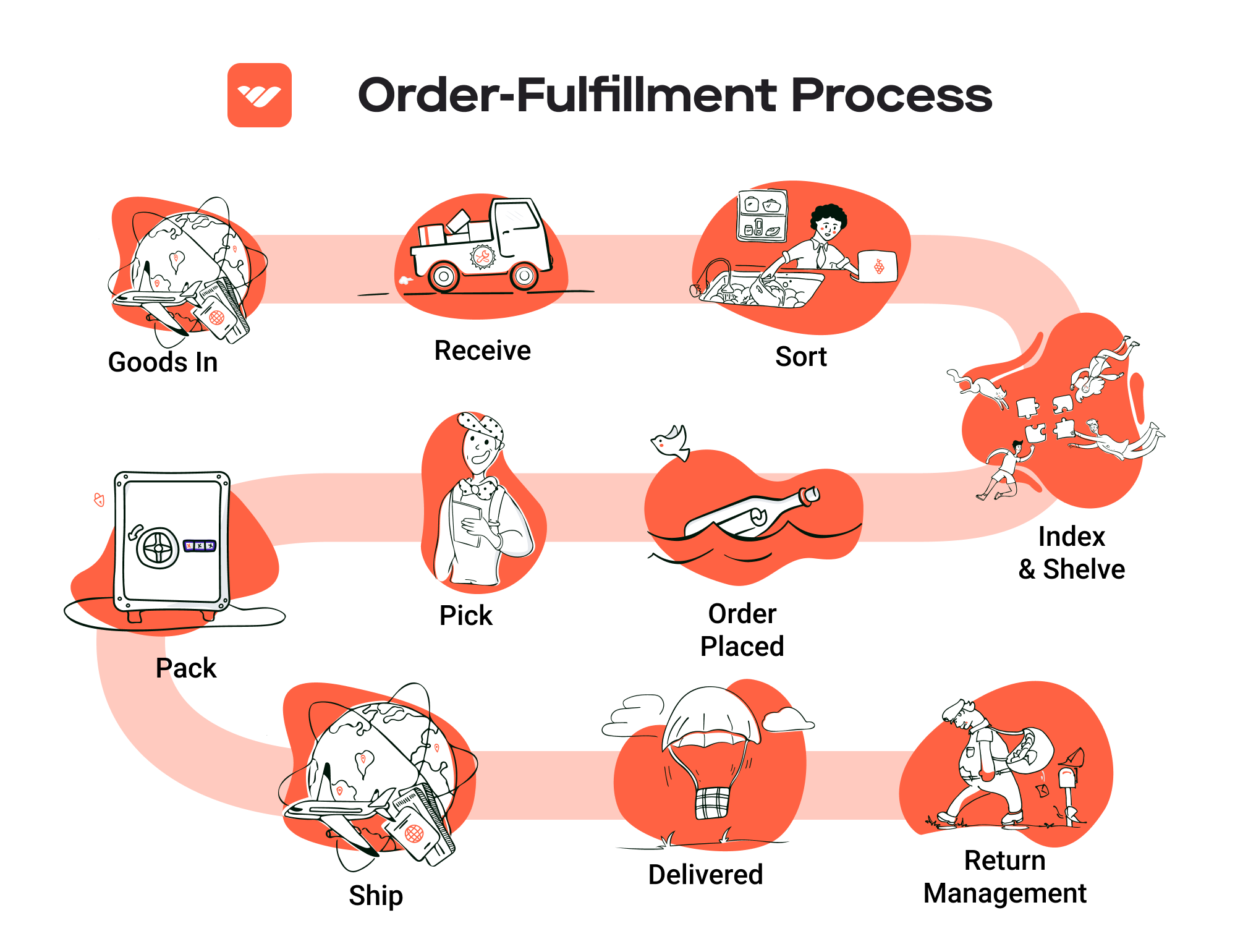
-
Customer Trust: Leveraging Amazon’s reputation can enhance customer trust. Many shoppers feel more comfortable purchasing items fulfilled by Amazon due to the perceived reliability and quality of service.
-
Multi-Channel Fulfillment: FBA allows sellers to fulfill orders from other sales channels (like eBay or their own websites) using Amazon’s fulfillment network. This provides flexibility and can streamline operations.
-
Scalability: As businesses grow, FBA can help scale operations without the need for significant investment in logistics. Amazon handles the complexities of storage and shipping, allowing sellers to focus on marketing and product development.
-
Inventory Management: Amazon provides tools for tracking inventory levels and sales performance, which can simplify the logistics of managing stock.
Cons of Using Amazon FBA
-
High Fees: While FBA offers many benefits, it comes at a cost. Sellers must pay for storage fees, fulfillment fees per item sold, and additional charges for long-term storage. These costs can add up quickly and eat into profit margins.
-
Strict Inventory Rules: Amazon has stringent rules regarding inventory management, including restrictions on product categories and the condition of items. Sellers must adhere to these rules to avoid penalties, which can be time-consuming and cumbersome.
-
Commingling Risks: FBA uses a commingling inventory model, meaning that products from different sellers may be stored together. This can lead to issues if another seller’s product is defective or misrepresented, as customers may associate that experience with your brand.
-
Loss of Control: By outsourcing fulfillment to Amazon, sellers may lose some control over branding and customer experience. Packaging and shipping will be handled according to Amazon’s policies, which may not align with a seller’s brand identity.
-
Variable Inventory Management: Sellers are dependent on Amazon’s inventory management system, which can sometimes lead to inaccuracies or delays that affect order fulfillment.
Who is FBA Best For?
Fulfillment by Amazon is particularly beneficial for:
-
Small to Medium-Sized Businesses: Companies that are looking to scale quickly without the overhead of managing their own logistics can find FBA an attractive option.
-
New Sellers: Entrepreneurs just starting in e-commerce can leverage Amazon’s vast infrastructure and customer base to gain traction in the market.
-
Brands with High Turnover Products: Businesses that sell products with consistent demand can benefit from FBA’s efficient fulfillment process, allowing them to focus on growth rather than logistics.
-
Multi-Channel Sellers: Brands that sell on multiple platforms and want to streamline fulfillment can take advantage of Amazon’s FBA service to manage orders from various sources efficiently.
-
Niche Products: Sellers with unique or niche products can benefit from Amazon’s extensive reach and customer trust, helping them gain visibility in competitive markets.
Conclusion
In conclusion, Fulfillment by Amazon offers a robust fulfillment solution that can help e-commerce businesses scale efficiently. While there are notable advantages, such as Prime eligibility and customer trust, sellers must also consider the associated costs and potential risks. Evaluating the specific needs and circumstances of your business will ultimately determine whether FBA is the right choice for your fulfillment strategy.
Core Services Offered by Fulfillment Centers
Inventory Management & Warehousing
Inventory management and warehousing are foundational services provided by fulfillment centers that enable e-commerce businesses to efficiently manage their stock levels and storage needs. This service encompasses the organization, storage, and tracking of products within a warehouse environment, ensuring that inventory is readily available for order fulfillment.
Fulfillment centers use sophisticated Warehouse Management Systems (WMS) to track inventory in real-time. This technology allows businesses to monitor stock levels, receive alerts for low inventory, and automate reordering processes. By distributing inventory across multiple locations, fulfillment centers can reduce shipping costs and improve delivery speeds, ultimately enhancing customer satisfaction.
The benefits of effective inventory management and warehousing include:
- Reduced Holding Costs: By optimizing inventory levels and using space efficiently, businesses can lower storage costs.
- Improved Order Accuracy: Real-time tracking and management help minimize errors in order fulfillment, leading to higher customer satisfaction.
- Scalability: As a business grows, fulfillment centers can easily adjust storage capacity and inventory distribution strategies to meet increasing demand.
Pick and Pack Services
Pick and pack services are integral to the fulfillment process, involving the selection of items from the warehouse and preparing them for shipment. This process typically includes picking the right products, packing them securely, and labeling them for delivery.
Fulfillment centers streamline the pick and pack process through automation and efficient workflows. Using advanced technology, they can quickly locate and retrieve items, ensuring that orders are fulfilled accurately and promptly. This service is especially critical for e-commerce businesses that require fast turnaround times to meet customer expectations.
Key benefits of pick and pack services include:
- Faster Order Processing: Efficient picking and packing reduce the time from order placement to shipment, enabling businesses to meet customer demands for quick delivery.
- Custom Packaging Options: Fulfillment centers often offer customizable packing solutions, allowing brands to create memorable unboxing experiences that enhance customer loyalty.
- Scalability: During peak seasons, fulfillment centers can ramp up operations to handle increased order volumes without compromising quality or speed.
Kitting and Assembly
Kitting and assembly services involve combining multiple products into a single package or kit before shipping. This service is especially useful for e-commerce businesses that offer bundles or promotional packages, as it allows for the efficient preparation of these offerings.
Fulfillment centers equipped to handle kitting and assembly can streamline the process by managing the assembly of kits in-house. This means that products can be packaged and shipped together, reducing the time and labor involved in assembling orders individually.
The advantages of kitting and assembly services include:
- Enhanced Product Offerings: Businesses can create unique product bundles that attract customers, potentially increasing sales and average order value.
- Time Savings: By outsourcing kitting and assembly to a fulfillment center, e-commerce businesses can focus on core operations while ensuring that their products are packaged and prepared for shipment efficiently.
- Inventory Control: Kitting services allow businesses to manage inventory more effectively by combining multiple SKUs into a single unit, simplifying inventory tracking and reducing complexity.
Returns Management (Reverse Logistics)
Returns management, or reverse logistics, is the process of handling product returns and exchanges. This service is vital for e-commerce businesses, as online shopping often comes with higher return rates compared to brick-and-mortar retail.
Fulfillment centers offer comprehensive returns management services, including processing returned items, inspecting their condition, restocking them if they are in sellable condition, and managing customer exchanges. This streamlined approach not only improves customer satisfaction but also helps businesses recover value from returned products.
The benefits of effective returns management include:
- Improved Customer Experience: A smooth returns process enhances customer trust and loyalty, encouraging repeat purchases.
- Cost Efficiency: By managing returns efficiently, fulfillment centers can help reduce the costs associated with handling returns, such as shipping and restocking fees.
- Data Insights: Returns management can provide valuable insights into product performance and customer preferences, allowing businesses to make informed decisions about inventory and product offerings.
In conclusion, partnering with a fulfillment center for these core services can significantly enhance the operational efficiency of e-commerce businesses. By leveraging advanced technology and industry expertise, fulfillment centers enable businesses to focus on growth while ensuring that their logistics operations are streamlined and effective.
How to Choose a Fulfillment Partner: A 6-Point Checklist
Location & Warehouse Network
Why It’s Important:
The geographical location of your fulfillment partner’s warehouses can significantly affect shipping costs and delivery times. A strategically positioned network allows for quicker delivery to your customers, which enhances customer satisfaction and can reduce shipping expenses.
Questions to Ask:
– How many fulfillment centers do you operate, and where are they located?
– Can you distribute my inventory across multiple warehouses to optimize shipping times?
– Do you have the ability to manage international shipping, and what regions do you serve?
Technology & Integrations
Why It’s Important:
A fulfillment partner with advanced technology can streamline operations, improve accuracy, and provide real-time visibility into inventory and order status. Integration with your existing e-commerce platforms and tools is essential for a seamless operation.
Questions to Ask:
– What inventory management systems do you use, and how do they integrate with popular e-commerce platforms?
– Can you provide real-time tracking and reporting features?
– What APIs or integrations do you offer for connecting with my existing systems?
Specializations (e.g., cold storage, oversized items)
Why It’s Important:
Not all fulfillment partners are equipped to handle specialized products. If your business involves items requiring temperature control, hazardous materials, or oversized products, it’s crucial to partner with a provider that has the necessary capabilities.
Questions to Ask:
– Do you have specific expertise in handling specialized products, such as perishable goods or large items?
– What certifications do you hold that ensure compliance with regulations for these items?
– How do you manage the unique challenges associated with these types of products?
Scalability & Capacity
Why It’s Important:
As your business grows, your fulfillment needs will evolve. Choosing a partner that can scale with your business ensures that you won’t face capacity issues or service disruptions as order volumes increase.
Questions to Ask:
– How do you accommodate seasonal spikes in order volume?
– What is your maximum capacity, and how quickly can you scale operations?
– Can you provide examples of how you have helped other clients scale effectively?
Pricing and Contracts
Why It’s Important:
Understanding the cost structure and contract terms of your fulfillment partner is crucial for maintaining profitability. Transparent pricing models help avoid unexpected costs and ensure that you can budget effectively.
Questions to Ask:
– Can you provide a detailed breakdown of your pricing structure, including any hidden fees?
– What are the terms of your contract, and is there flexibility for renegotiation as our needs change?
– Are there discounts available for bulk shipments or long-term commitments?
Customer Support & Reviews
Why It’s Important:
Strong customer support is vital for resolving issues quickly and maintaining operational efficiency. Additionally, checking reviews can provide insight into the partner’s reliability and customer satisfaction.
Questions to Ask:
– What is your customer support structure, and how can I reach you in case of urgent issues?
– Can you provide references from other clients in my industry?
– How do you handle customer complaints and returns, and what is your average resolution time?
Conclusion
Choosing the right fulfillment partner is a critical decision that can significantly influence your e-commerce operations. By using this checklist, you can systematically evaluate potential partners based on their capabilities, technology, and customer service. Ultimately, the goal is to find a partner that aligns with your business needs and supports your growth objectives. By asking the right questions and thoroughly assessing each option, you can make an informed decision that enhances your fulfillment strategy and customer satisfaction.
Understanding Fulfillment Pricing: A Breakdown of Common Fees
Initial Setup Fees
When partnering with a fulfillment service provider, businesses often encounter initial setup fees. These fees cover the costs associated with onboarding your business to the fulfillment platform. The setup process typically includes integrating your e-commerce platform, establishing inventory management systems, and configuring shipping settings.
Calculation: Initial setup fees vary widely based on the complexity of the integration and the size of your inventory. Some providers may charge a flat fee, while others may have tiered pricing based on the number of SKUs or the level of customization required. It’s essential to ask for a detailed breakdown of what these fees entail to avoid unexpected costs.
Receiving Fees
Receiving fees are charged when the fulfillment center takes possession of your inventory. This fee covers the labor and resources needed to unload, inspect, and store your products.
Calculation: Receiving fees can be calculated per pallet, per item, or per hour, depending on the fulfillment provider’s pricing structure. For example, a provider may charge a flat fee for each pallet received, with additional costs for any special handling required, such as inspecting items or re-packaging. It’s crucial to understand how your specific products will impact receiving costs, particularly if you have items that require special care or handling.
Storage Fees (per pallet/bin)
Storage fees are ongoing charges for keeping your inventory in the fulfillment center. These fees are typically calculated on a monthly basis and can be based on the space your inventory occupies, such as per pallet or per bin.
Calculation: Storage fees are often tiered, meaning that the more pallets you store, the lower the per-pallet cost may become. However, businesses should also be aware of potential overage fees if they exceed agreed-upon storage limits. Some providers may offer discounts for longer-term commitments, so it’s worth discussing your storage needs and potential for volume increases with your fulfillment partner.
Pick & Pack Fees (per item/order)
Pick and pack fees are charged for the labor involved in picking items from your inventory and packing them for shipment. This fee is crucial for businesses with varying order sizes and complexities.
Calculation: Pick and pack fees can be structured in several ways. Some providers charge a flat fee per order, while others may charge based on the number of items in each order. For instance, a fulfillment center may charge a base fee for the first item and an additional fee for each subsequent item. Additionally, businesses should inquire about any extra charges for special packing requirements, such as branded packaging or gift wrapping.
Shipping Fees
Shipping fees are typically the most variable cost in the fulfillment pricing structure, influenced by factors such as package weight, dimensions, destination, and chosen shipping method.
Calculation: Shipping fees can be calculated based on real-time carrier rates, which means they fluctuate based on current market conditions. Many fulfillment providers offer discounted shipping rates due to their volume, allowing businesses to save on overall shipping costs. It’s essential to discuss how shipping costs are calculated and whether the provider offers options for rate shopping to ensure you are getting the best rates available.
Tips for Getting an Accurate Quote
-
Provide Detailed Information: When requesting a quote, offer comprehensive details about your business, including the number of SKUs, average order size, and expected order volume. The more information you provide, the more accurate your quote will be.
-
Understand Your Needs: Clearly outline your specific fulfillment requirements, such as packaging preferences, shipping methods, and any special handling needs. This helps providers tailor their quotes to your unique circumstances.
-
Ask for a Breakdown: Request a detailed breakdown of all fees involved. This should include initial setup fees, receiving fees, storage fees, pick and pack fees, and shipping fees. Understanding how each fee is calculated will help you compare different providers accurately.
-
Inquire About Discounts: Many fulfillment providers offer discounts for long-term contracts or higher volumes. Don’t hesitate to ask about potential savings based on your expected growth.
-
Consider Hidden Fees: Be mindful of potential hidden fees, such as those for returns processing or overage charges for storage. Clarifying these aspects upfront will help you avoid unexpected costs down the line.
By understanding these common fulfillment pricing models and following these tips, you can make informed decisions that align with your business goals and budget, ultimately supporting your growth and success in the e-commerce landscape.
Frequently Asked Questions (FAQs) about Fulfillment
1. What is shipping fulfillment?
Shipping fulfillment refers to the entire process of receiving, processing, and delivering orders to customers. This includes inventory management, order processing, picking and packing products, shipping, and handling returns. Effective fulfillment ensures that customers receive their orders accurately and on time, which is crucial for maintaining customer satisfaction and loyalty.
2. What is a fulfillment center?
A fulfillment center is a specialized warehouse designed specifically for the storage and distribution of products. Unlike traditional warehouses, fulfillment centers focus on order processing and shipping directly to customers. They are equipped with advanced technology and logistics systems to handle high volumes of orders efficiently.
3. What’s the difference between a warehouse and a fulfillment center?
The primary difference lies in their functions. A warehouse is primarily used for storage, often focusing on bulk inventory management. In contrast, a fulfillment center emphasizes order processing, packaging, and shipping directly to customers. Fulfillment centers typically have systems in place for rapid order turnaround and shipping, while warehouses may not prioritize these aspects.
4. What is a 3PL?
A Third-Party Logistics (3PL) provider is a company that offers outsourced logistics services, including warehousing, fulfillment, and shipping. Businesses partner with 3PLs to leverage their expertise, technology, and resources, allowing them to scale operations without managing logistics in-house. This is particularly beneficial for e-commerce businesses aiming to streamline operations and reduce costs.
5. How much do fulfillment services cost?
Fulfillment service costs can vary widely based on several factors, including order volume, the complexity of services, storage fees, and shipping rates. Generally, costs may include a per-order fee, storage fees based on the amount of inventory held, and shipping charges. Businesses should evaluate their specific needs and compare quotes from multiple fulfillment providers to find the best fit.
6. How do I choose a fulfillment partner?
When selecting a fulfillment partner, consider factors such as their experience in your industry, technology capabilities, shipping options, scalability, customer service reputation, and pricing structure. It’s also beneficial to ask for case studies or references from other businesses that have used their services to gauge reliability and performance.
7. Can I use multiple fulfillment centers?
Yes, using multiple fulfillment centers can enhance your logistics strategy. By distributing inventory across various locations, you can reduce shipping times and costs, improve order accuracy, and better manage peak demand periods. This strategy is particularly effective for businesses looking to scale and expand into new markets.
8. What are the benefits of using a fulfillment service?
Utilizing a fulfillment service can offer several advantages, including reduced operational costs, improved shipping times, access to advanced technology and logistics expertise, and the ability to scale operations without the burden of managing logistics in-house. This allows businesses to focus more on core activities like marketing and product development.
9. How does inventory management work in fulfillment?
Inventory management in fulfillment involves tracking stock levels, managing reorder points, and ensuring product availability across various sales channels. Advanced fulfillment services offer real-time inventory visibility, automated replenishment alerts, and integration with e-commerce platforms to streamline these processes and reduce stockouts or overstock situations.
10. What should I do if I experience fulfillment issues?
If you encounter fulfillment issues, first assess the root cause—be it inventory shortages, shipping delays, or order inaccuracies. Communicate promptly with your fulfillment partner to resolve the issue and implement corrective actions. It’s also essential to establish clear performance metrics and regular check-ins with your fulfillment provider to minimize future problems.
Conclusion: Is Outsourcing Fulfillment the Right Move for Your Business?
Evaluating the Benefits of Outsourcing Fulfillment
Outsourcing fulfillment can be a transformative decision for e-commerce businesses looking to scale. The key benefits of partnering with a fulfillment service include substantial time savings, enhanced scalability, and access to industry expertise. By entrusting order processing, inventory management, and shipping logistics to a specialized provider, you free up valuable resources to focus on core business activities such as marketing and product development. This shift allows for more strategic growth initiatives rather than getting bogged down in operational complexities.
Scalability is another critical advantage. As your order volume increases, a proficient fulfillment partner can seamlessly adjust to meet your growing demands without the headaches associated with expanding in-house logistics. This flexibility is essential in a fast-paced e-commerce environment where consumer expectations for rapid delivery and order accuracy are at an all-time high. Additionally, leveraging the expertise of a fulfillment provider can lead to operational efficiencies, reduced shipping costs, and improved customer satisfaction through faster and more reliable service.
However, the success of outsourcing fulfillment hinges on selecting the right partner. It’s crucial to choose a fulfillment provider that aligns with your brand values, operational needs, and growth ambitions. Look for a partner with proven technology, a robust network of fulfillment centers, and a commitment to customer service.
To determine if outsourcing fulfillment is the right step for your business, start with a thorough audit of your current shipping processes. Identify bottlenecks, inefficiencies, and areas where you could benefit from specialized support. This evaluation will provide clarity on whether a fulfillment partner can help you achieve your business goals more effectively and efficiently. Don’t hesitate to take this step; the right fulfillment partner could be the key to unlocking your e-commerce potential.
Important Disclaimer
⚠️ Important Disclaimer
The information in this guide is for educational purposes. Fulfillment services, pricing, and platform features change frequently. Always conduct your own due diligence and consult with providers directly before making business decisions.
